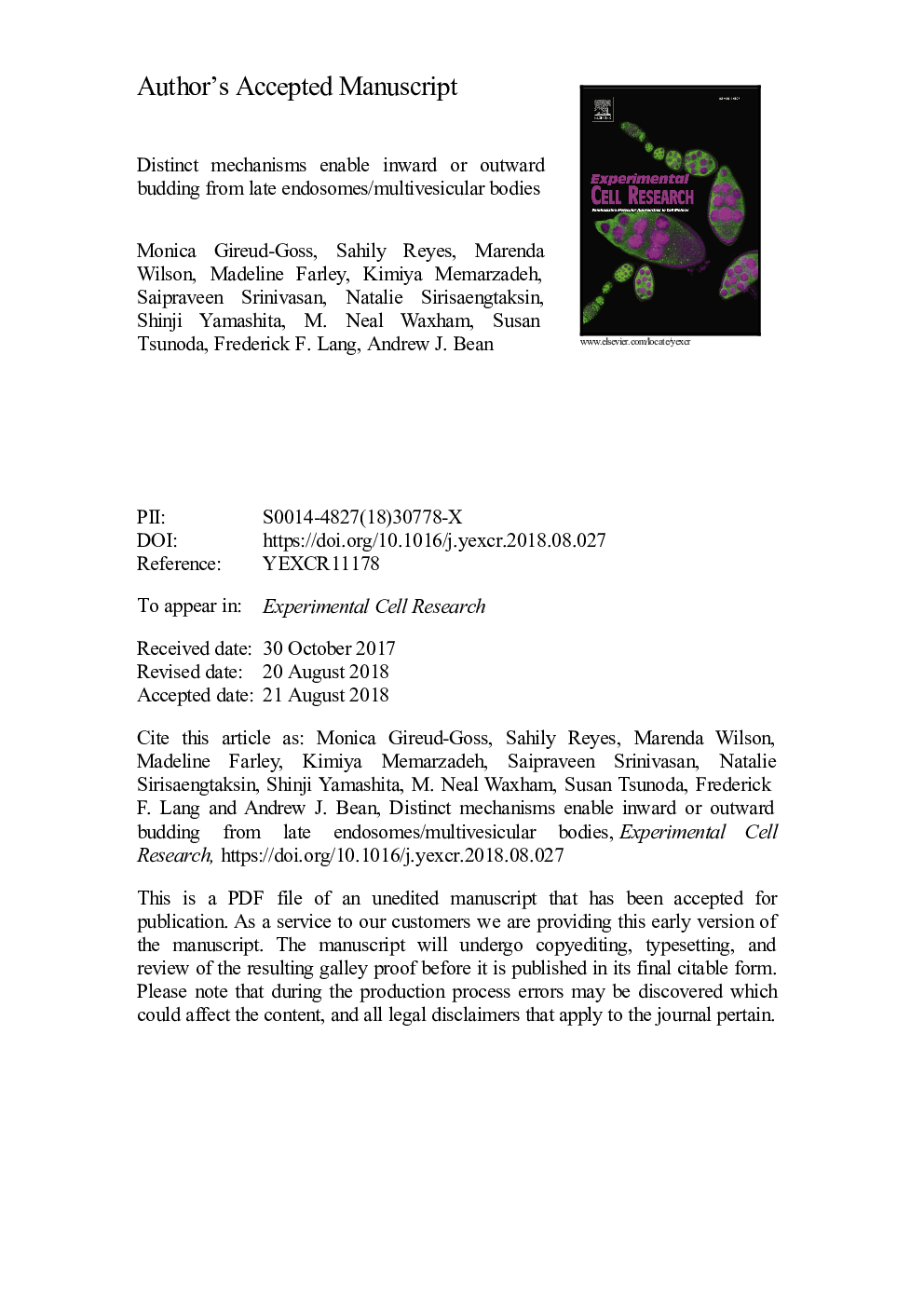| Article ID | Journal | Published Year | Pages | File Type |
|---|---|---|---|---|
| 11019522 | Experimental Cell Research | 2018 | 33 Pages |
Abstract
Regulating the residence time of membrane proteins on the cell surface can modify their response to extracellular cues and allow for cellular adaptation in response to changing environmental conditions. The fate of membrane proteins that are internalized from the plasma membrane and arrive at the limiting membrane of the late endosome/multivesicular body (MVB) is dictated by whether they remain on the limiting membrane, bud into internal MVB vesicles, or bud outwardly from the membrane. The molecular details underlying the disposition of membrane proteins that transit this pathway and the mechanisms regulating these trafficking events are unclear. We established a cell-free system that reconstitutes budding of membrane protein cargo into internal MVB vesicles and onto vesicles that bud outwardly from the MVB membrane. Both budding reactions are cytosol-dependent and supported by Saccharomyces cerevisiae (yeast) cytosol. We observed that inward and outward budding from the MVB membrane are mechanistically distinct but may be linked, such that inhibition of inward budding triggers a re-routing of cargo from inward to outward budding vesicles, without affecting the number of vesicles that bud outwardly from MVBs.
Related Topics
Life Sciences
Biochemistry, Genetics and Molecular Biology
Cancer Research
Authors
Monica Gireud-Goss, Sahily Reyes, Marenda Wilson, Madeline Farley, Kimiya Memarzadeh, Saipraveen Srinivasan, Natalie Sirisaengtaksin, Shinji Yamashita, Susan Tsunoda, Frederick F. Lang, M. Neal Waxham, Andrew J. Bean,
